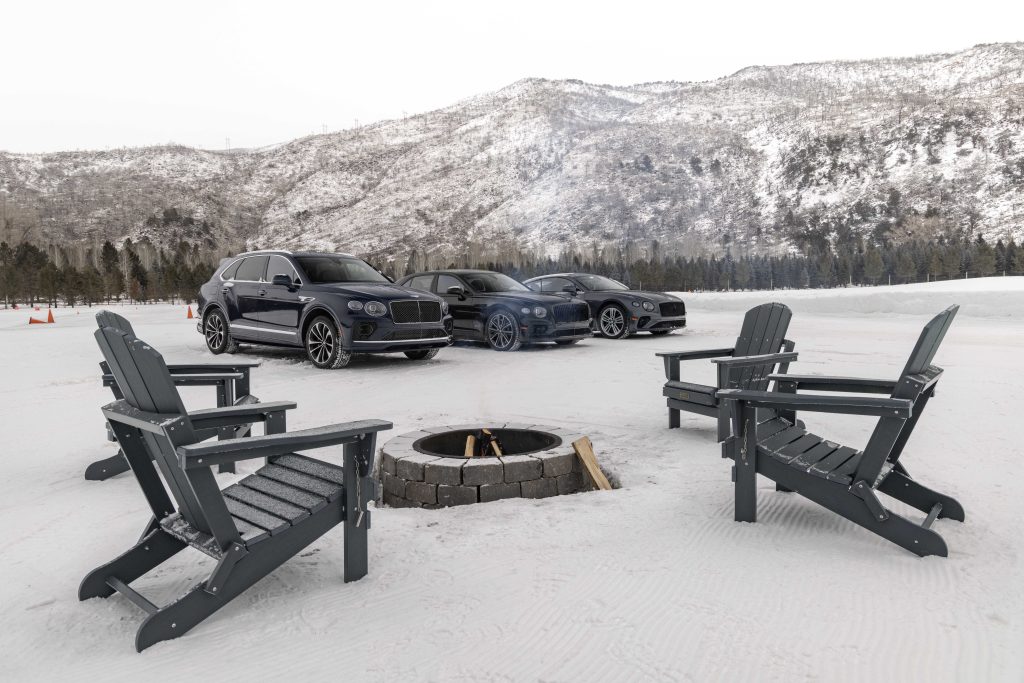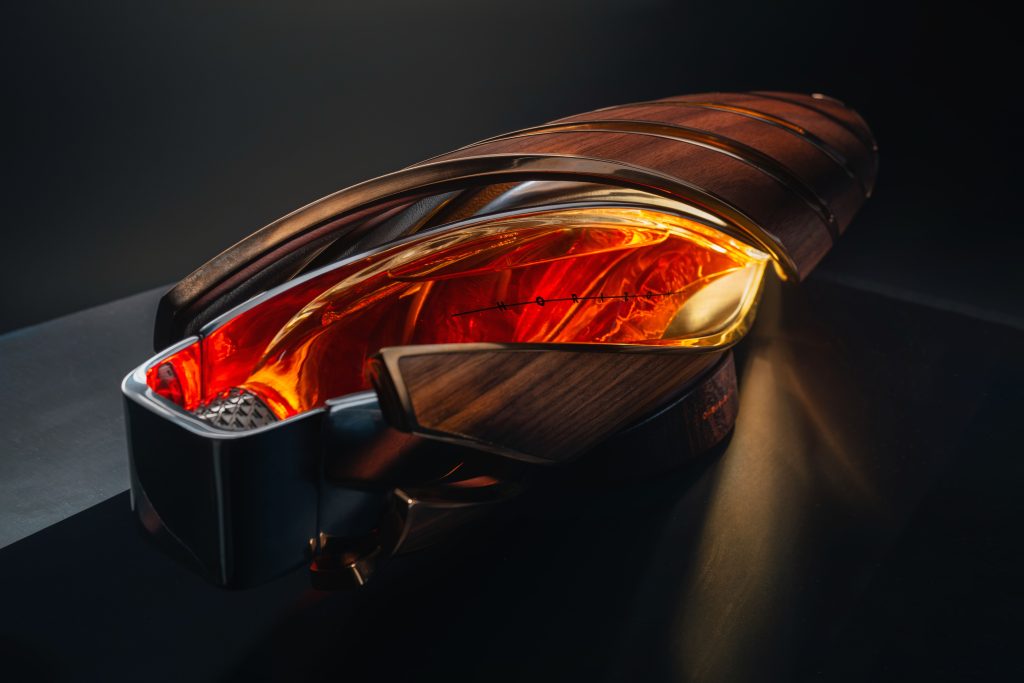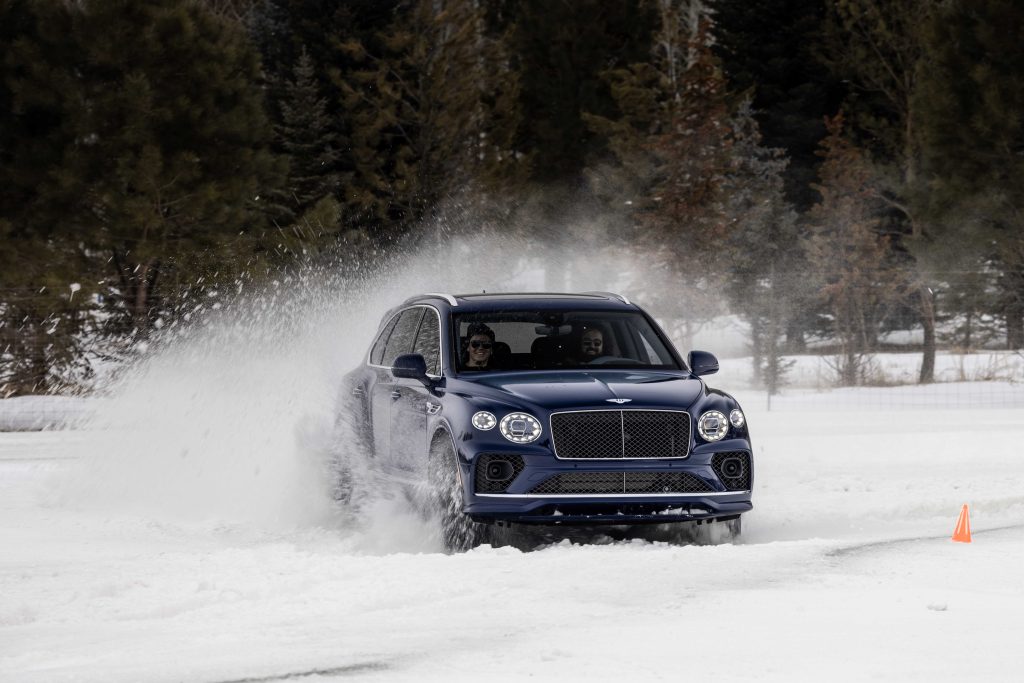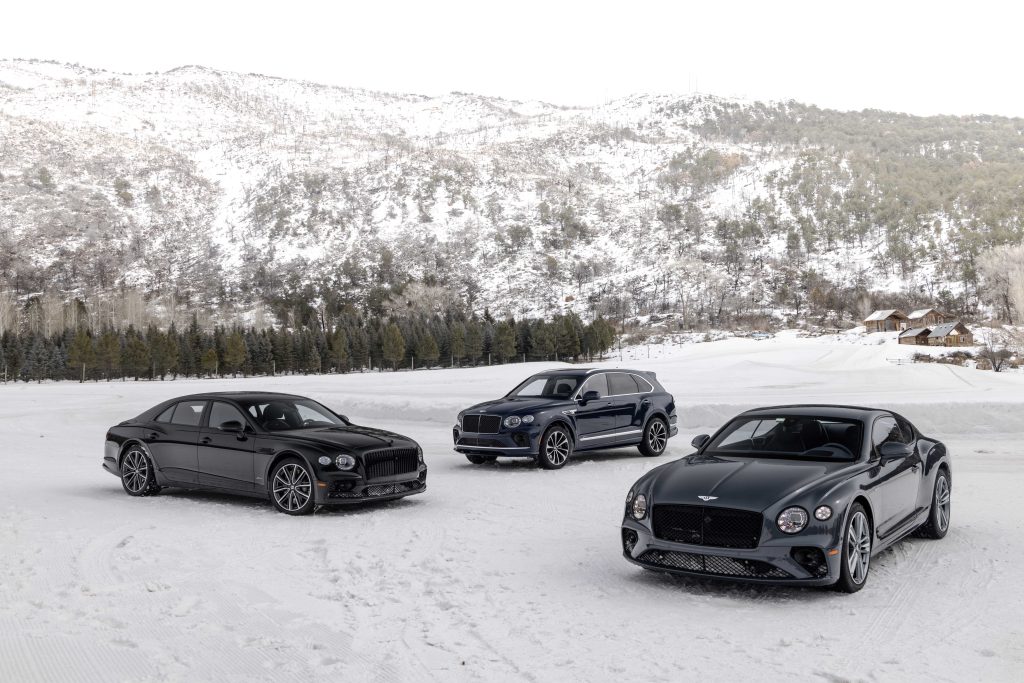Insight from Bentley’s Drive Experience in Aspen
Discussing sustainability with The Macallan after driving a full fleet of future-forward vehicles

Since announcing their Beyond 100 strategy in 2020, which (at the moment) focuses on transitioning the entire model range to battery electric vehicles by 2030, Bentley has made significant investments in being more sustainable from the ground up. Not only have sustainable materials and lessons learned from their 2019 EXP 100 GT concept car made their way into current models and special editions like the Batur, but Bentley has already transformed its HQ into the UK’s first carbon neutral car factory. In addition to a model range composed exclusively of EVs, Bentley is also aiming for end-to-end carbon neutrality. Lofty goals to be sure, but having committed to a £2.5B investment in sustainability in January 2022 and having just announced that 2022 was a record setting year for both profit (€708 million) and sales (15,174 units) we see Bentley as being well positioned to follow through. More uniquely spec’d vehicles, higher option take rates and the sale of limited edition and specialty vehicles drove the record setting numbers and also align with what we see as the natural progression of luxury vehicles into pure electric luxury vehicles. Bentley has confirmed that the first of their five new EVs will launch in 2025 as a 2026 model and will be built in the new “Dream Factory” currently under construction in Crewe, England.

The Macallan joined Bentley on their journey to a more sustainable future in July 2021. The renowned scotch whisky producer shares the goal of achieving carbon neutrality by 2030, an ambition underpinned by the opening of their state-of-the-art distillery in Speyside in 2018. At present the partnership between Bentley and The Macallan is focused on sharing innovative research into the sourcing of sustainable materials, and working together to find and share sustainable, local suppliers wherever possible. More than two UK luxury brands coming together for a headline generating collaboration, the duo are working in concert to learn from each other wherever possible when it comes to reducing their overall carbon footprint and maximizing efficiencies in their supply chains.
For both brands it’s not just about the quality and amount of materials used, it’s about taking responsibility for the impact their decisions will have on the environment. By maximizing the use of strictly recyclable and sustainable materials in their packaging, The Macallan has made 98% of their product packaging able to meet this standard. In two years time The Macallan aims to find a way to convert the last 2% of product packaging and reach 100% curbside recyclable packaging material. For a luxury brand steeped in history, with a customer base that expects a particularly high level of quality (that starts with packaging), this is no small task.

The same can be said of Bentley, where the overall volume of production is considerably lower than that of The Macallan, but the stakes are equally high. The expectation from Bentley customers is that there will be no perceptible dropoff in quality while the brand seeks to fulfill its many sustainability goals. By looking to leaders in other industries, like The Macallan, who recently achieved a goal set in 2019 of having all wood and wood fiber materials in their packaging supply chain come from sustainable sources, a goal now also held by the Scotch Whisky Association for the entire industry, Bentley can progress toward their own goals more efficiently and at a quicker pace.

If The Macallan can sure that the wood that is crafted into their Fine & Rare, 25 Years Old, 30 Years Old and Red Collection boxes is 100% Forest Stewardship Council (FSC) certified, then Bentley can apply lessons learned from that process to making ethically sourced and sustainable wood a part of their interior material offerings, if not perhaps part of their supply chain and distribution chain as well. Already we can find examples of this level of care taken in the wood found in Bentley vehicles such as the Bentayga EWB, where the woodsets take over 10 hours to complete. As these pieces are going to receive the utmost attention from the highly skilled workers in Bentley’s woodshop, any inconsistencies of quality would be noticed immediately. This is just one instance of where there’s no substitute for handmade craftsmanship.

On the consumer facing side of the partnership, the first product will arrive this summer in the form of The Macallan Horizon. A “single malt whisky prototype” release and joint venture between the design teams at The Macallan and Bentley, Horizon is an impressive and unique result from these two legacy brands with deeply cherished histories. Comprised of recycled copper from small spirit stills located in The Macallan’s former distillery, aluminum recovered from the production of Continental GT, Flying Spur and Bentayga vehicles in Crewe, as well as recycled wood from both brands and the world’s lowest CO2 footprint leather (sourced in Scotland and also used in the aforementioned Batur) the Horizon is as intriguing as it is unexpected.

We’d go so far as to say the product is an appropriate physical manifestation of the partnership between the two brands in that it seems to announce that no one is constrained by tradition and everything will be of the utmost quality. Not only is retaining and improving upon the quality something Bentley is known for, but it’s crucial for contemporary products as they age as well.

Exploring the future of sustainable luxury with initiatives like the one undertaken with London’s Royal College of Art in 2022 is a promising example of the brand’s foresight. Each of the eight projects selected from students in the Intelligent Mobility MA course propose new forms for sustainable luxury mobility, by way of vehicles and systems designed to create a sense of belonging, respect and meaning. From the interconnected spaces of research, three key design spaces emerged, “the made world, the regenerative world and the meaningful world.” Of these, it is the “made world” that particularly caught our attention as it directly addresses a foundational concern with regard to building more sustainable vehicles.

Bentley shared with us the following regarding student Shoichi Sato’s entropic design, “Pace Layers.” The artwork “took inspiration from the levels within a building including foundations, structure, skin, services, internal space and contents. This concept was applied to a car, where in the future, as parts of the car (system) become obsolete at different rates they can be intelligently replaced repeatedly or swapped, avoiding the redundancy and wastage in traditional vehicle lifecycles.” Over the air updates to a vehicle’s UX system are all well and good in terms of aiming to keep it relevant and on the road for years to come, with many vehicles heading in the direction of becoming smartphones with wheels, it’s important that luxury vehicles retain relevance beyond their technology. This is where an understanding and appreciation of craft is essential, as is the lifecycle of the thing being crafted. We’re happy to know Bentley is taking this area of research seriously and hope it will be a cornerstone in their development of their EVs as it has been in their ICE vehicles.
After stints in the driver’s seats of various Bentleys in Aspen (itself on a net-zero emissions mission by 2050) we were treated to tastes of The Macallan’s current offerings in their highly sought after “Harmony Collection,” which features the aforementioned FSC-certified packaging and labeling. We were struck by the complex, yet approachable nature of the four whiskies that make up the two limited edition collections. In particular the rich, dark chocolate notes of the Rich Cacao (a CH favorite) and the gingery, sweet oak notes of the Intense Arabica bottle of Harmony Collection II delighted our palate. We have to imagine the single malt within the handmade twisted glass bottle that’s at the core of the Horizon will take the drinker on journey equally as soul stirring as sliding sideways around a snow course in a Flying Spur.

While we eagerly anticipate the arrival of the first fully electric Bentley in two years’ time and appreciate the introduction to what an electrified Bentley will be like by way of hybrid variants of both the Flying Spur and Bentayga, we deeply enjoyed what felt like the start of farewell celebrations for the celebrated W12 engine. After more than 100,000 units, production of the iconic hand-built engine will come to an end in April 2024. Fittingly, the most powerful and efficient expression of the W12, in this instance worked over by the team at Mulliner, will power the Bentley Batur. As was the case with the Bacalar, the Batur features use of innovative sustainable materials and production methods. Insights gleaned from building these two exclusive, W12-powered cars will surely make their way into the five EV models Bentley plans to launch between 2025 and 2030.
We’ll not forget the joys of mashing the throttle of a Bentayga Speed, Continental GT Speed or Flying Spur Speed while exiting a corner on Bentley’s winter driving course, nor the unparalleled comfort found at the end of the day riding in the back of a Bentayga EWB equipped with the “Airline Seat” specification. If, however, we should ever need a reminder of these special experiences, we can reach for a bottle from The Macallan’s Harmony Collection, which for us will be forever intertwined with time spent celebrating the engine that powered Bentley to their first centenary, and will continue to have a lasting impact, powering them towards their second.
Image courtesy of Bentley












